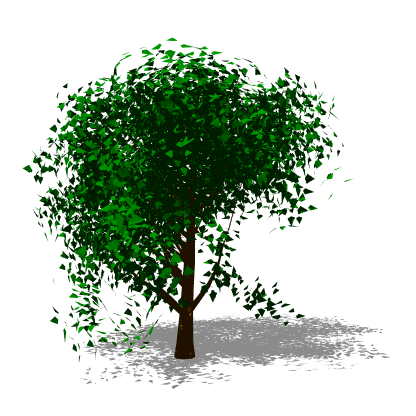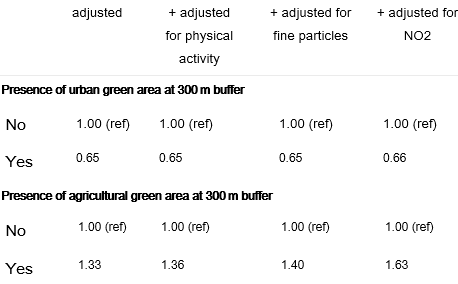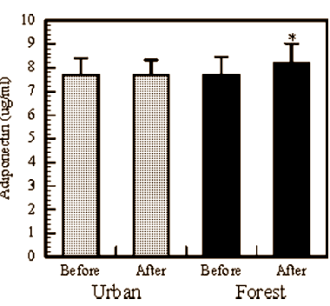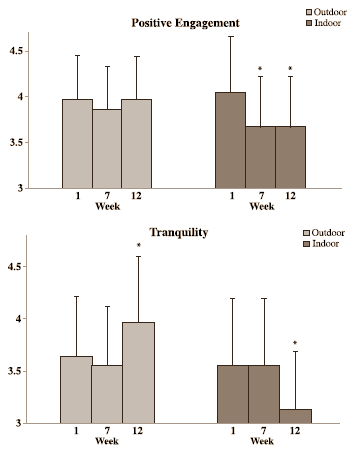 |
|
Groen in de buurt vermindert kans op borstkanker
Wonen in de nabijheid van parken en tuinen vermindert misschien de kans op borstkanker. Dat blijkt uit een epidemiologische studie die Spaanse onderzoekers hebben gepubliceerd in de International Journal of Hygiene and Environmental Health. Wonen in de buurt van agrarische gebieden verkleint volgens het onderzoek de kans op borstkanker niet, maar vergroot hem juist.

Studie
Resultaten
Vrouwen die op nog geen 300 meter afstand woonden van een park, een groenstrook of andere groene recreatieve ruimte, hadden ongeveer 35 procent minder kans op borstkanker dan vrouwen niet in de nabijheid van groen leefden. De onderzoekers corrigeerden onder meer voor leeftijd, inkomen en opleiding.
Toen de onderzoekers het effect van lichaamsbeweging en milieuverontreiniging - in de vorm van fijnstof of stikstof - wegpoetsten, stond de beschermende werking van groen nog steeds overeind. Het was dus niet zo dat vrouwen die woonden in een groene omgeving meer bewogen of schonere lucht inademden dan vrouwen die niet in een groene omgeving woonden.

De onderzoekers hebben geen onderscheid gemaakt tussen gebieden waar reguliere boeren actief waren en landbouwgebieden die op een biologische manier werden bewerkt.
Conclusie
"We found a reduced risk of breast cancer among women living in closer to urban green spaces", vertelt eerste auteur Cristina O'Callaghan-Gordo in een persbericht. [sciencedaily.com, August 21, 2018] "By contrast, women living closer to agricultural areas, had a risk higher. This finding suggests, that the association between green space and a risk of breast cancer is dependent on the land use."
"We found a linear correlation between distance from green spaces and breast cancer risk", verduidelijkt onderzoeksleider Mark Nieuwenhuijsen. "In other words, the risk of breast cancer in the population declines, the closer their residence is to an urban green space."
"These findings highlight the importance of natural spaces for our health and show why green spaces are an essential component of our urban environment, not just in the form of isolated areas but as a connective network linking the whole urban area and benefitting all its inhabitants."
"We still don't know which characteristics of natural spaces are the most beneficial and nor do we understand the mechanisms underpinning these beneficial health impacts", zegt co-auteur Manolis Kogevinas. "Other studies have shown that the mechanisms that might explain the health benefits of green spaces include higher levels of physical activity in the population and a reduction in air pollution, an environmental hazard clearly linked to the onset of cancer. However, we did not observe these associations."
"We believe that other mechanisms - including lower levels of stress among people living close to green spaces - could play a role, but more research is needed to confirm this hypothesis."
Meer:
Bomen beschermen mensen tegen kanker (2-6-2012)
 |
 |
 |
|
Lopen in het groen gezonder dan lopen in de stad Heb je de keus tussen bewegen in een bebouwde omgeving, of bewegen in een groene omgeving? Kies dan voor het laatste. Volgens onderzoekers van Nippon Medical School in Japan is het aantoonbaar gezonder. |
Hardlopen in de weilanden gezonder dan op treadmill In een groene omgeving trainen is geestelijk gezond, concluderen psychologen van de University of Essex. Lang hoeft een training in the green niet te duren om een positief mentaal effect te hebben. |
Workouts in de natuur motiveren beter dan workouts binnen Als je van jezelf vindt dat je moet gaan trainen, maar je afvraagt of je dat wel gaat volhouden, doe het dan als het even kan buiten. Ga hardlopen in de weilanden, of ga met je dumbbells trainen in de tuin. |